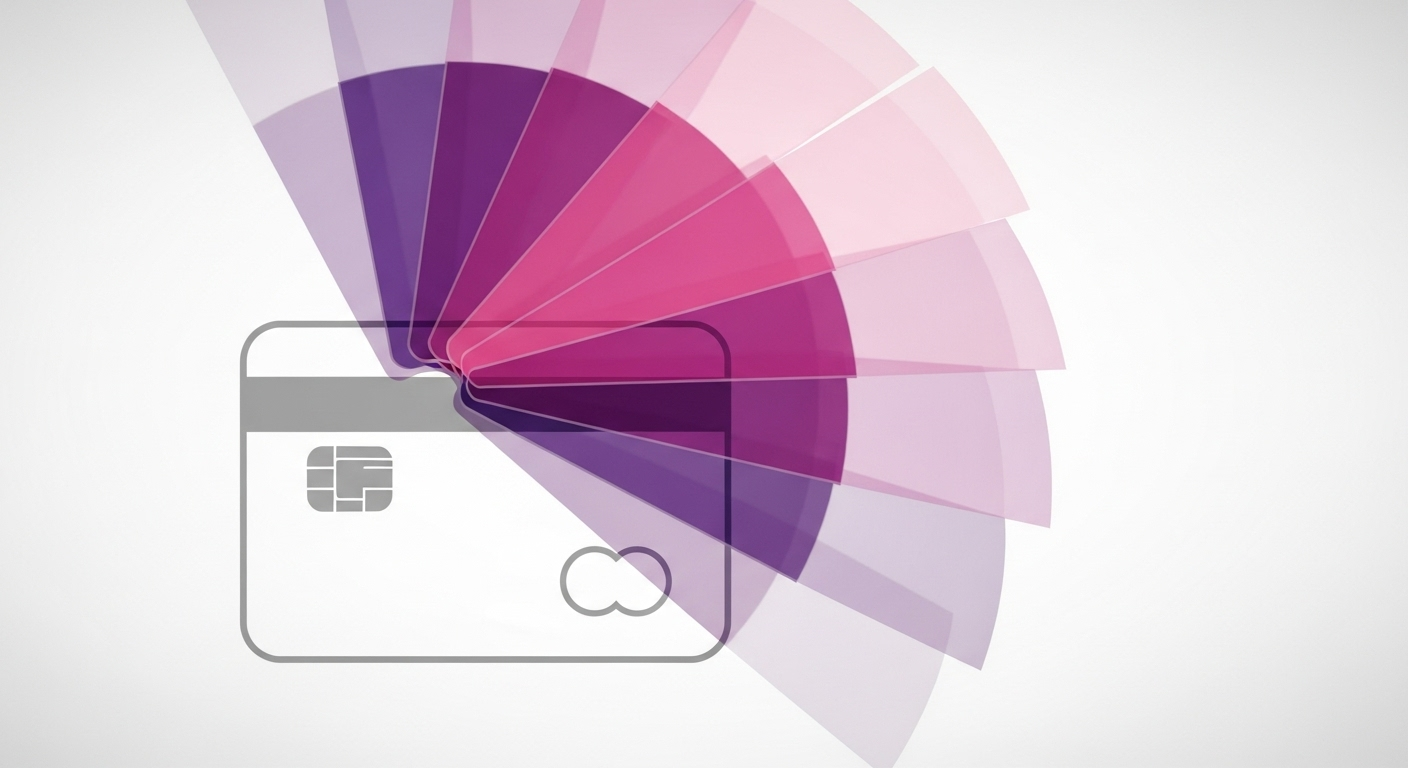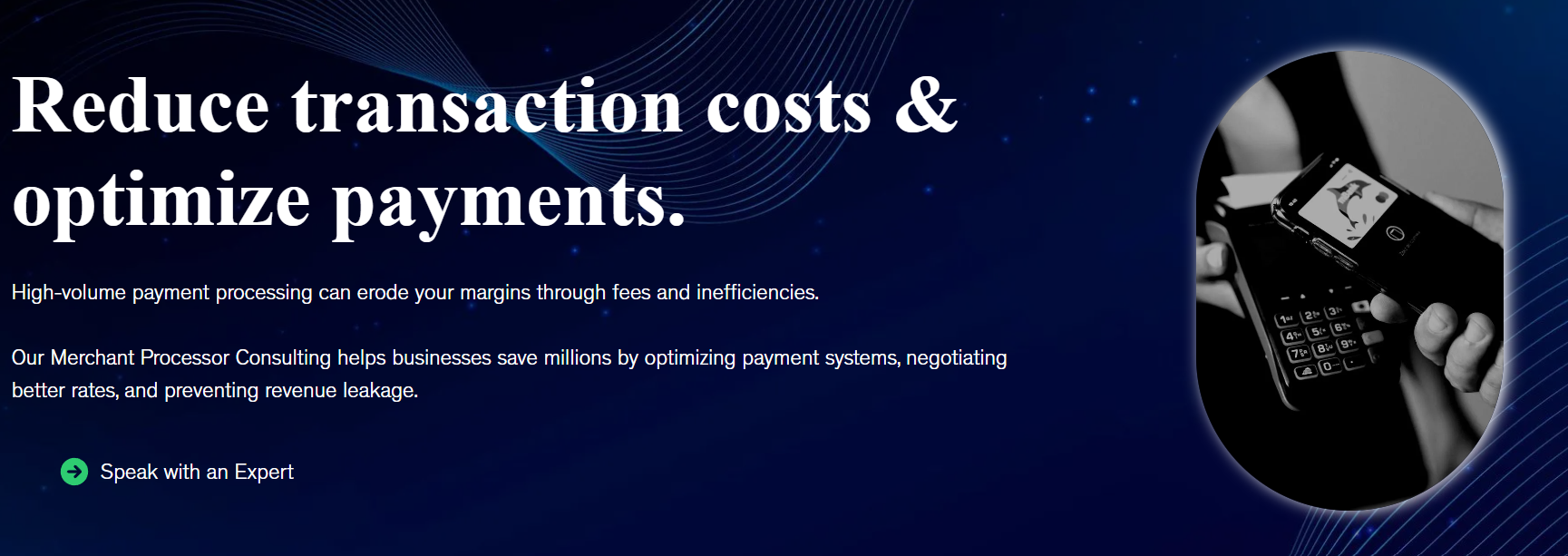Reduce Payment Processing Costs Without Switching Processors

Most high-volume businesses accept payment processing fees as fixed costs. In reality, they're not. They grow silently with your business, often going unnoticed. The money that you could use to fund expansion is now going towards paying your payment processor.
Fortunately, there are ways to reduce debit and credit card processing fees. And no, none of them involve switching processors. At Momentum Growth Partners, we work with high-volume businesses to improve their payment processing systems. Our payment processor solutions can help you improve your margins as you scale, reducing fee expenses by up to 40%.
In this blog, we will go over several strategies business owners can explore to reduce their payment processing fees. Keep reading until the end, as we will provide expert insights and valuable tips.
Let's get started!
What Makes Up Payment Processing Fees?

Whether it's credit card or debit card transactions, businesses must pay to process payments. These costs are known as credit card or payment processing fees, and they consist of the following:
Interchange Fees
Interchange fees constitute a huge chunk of payment processing costs, typically 70% to 80%. This money goes to the banks that issue your customers' debit and credit cards. Payment card brands, such as Visa, Mastercard, Discover, and American Express, determine these fees.
What are the average interchange fees? Well, it depends on a lot of factors, including card type, size of merchant, location, and transaction type. Typically, rates can range from 0.05% for regulated debit cards to 2.95% for premium rewards cards. You may also need to pay a fixed fee for each transaction.
Here's the bad and the good news. You can't eliminate interchange fees, but you can optimize your payment system to reduce these costs. We'll discuss how you can do that in detail later on in this blog.
Card Network Assessment Fee
To process card payments, you need access to the card network. Debit and credit card companies offer this infrastructure, but at a cost. This is referred to as the card network assessment fee.
While card network assessment fees can range from 0.13% to 0.15% per transaction, they add up pretty fast. They're also non-negotiable.
Payment Processor Markup
A processor works with issuers' banks and card brands to process payments. Whether your customers conduct online transactions or pay by card at the store, you must pay the credit card processor. It can cost between 0.10% and 0.50% plus $0.05 to $0.10 per transaction.
While processor markups may seem like a lot, the good news is that you can negotiate these fees with credit card processing companies.
Gateway and Ancillary Fees
Gateway fees, monthly minimums, PCI compliance fees, and chargeback penalties may be part of your payment processing costs. High-volume businesses should pay close attention to these fees.
How to Reduce Interchange Fees Without Switching Processors

Changing providers can be a hassle and a time-consuming process. Fortunately, you don't have to do that to reduce interchange fees.
"Downgrades" are a major reason behind higher interchange fees. The payment processor has a tiered pricing model, with "qualified" customers receiving the best rates and "non-qualified" customers the worst. Each slab has a set of criteria that merchants must fulfill to be eligible for a particular rate.
A "qualified" transaction might cost 1.65%, but the same transaction downgraded to "non-qualified" may jump to 2.95%. When a transaction doesn't meet specific credit card network criteria, it gets bumped to a higher interchange rate.
Some of the factors that can affect the rates you qualify for include the following:
- Missing invoice data on B2B credit card transactions
- Delayed batch processing
- Address verification mismatches
- Recurring transaction flags
- Technical processing errors
To reduce interchange fees, here are a few strategies our experts recommend exploring:
1. Provide Level 2/3 Data
Processing corporate, purchasing, and government cards is where you'll find the most savings. Processors offer discounted rates on B2B and business-to-government transactions.
To qualify for these rates, you must provide detailed Level 2/3 data. It may include:
- Customer codes
- Tax amounts
- Invoice numbers
- Line-item details
Providing additional payment data can reduce your interchange fees by 0.5% or even more. For a business processing $1 million in B2B transactions, it can save $50,000 every year simply by providing Level 2/3 data.
Most gateways can capture and transmit Level 2/3 data, but they need to be properly configured. An experienced payment processor can help set up the system.
2. Fix Your Batching Process
An issuing bank charges you based on the perceived risk it faces. If you don't settle credit card transaction fees within 24 to 48 hours, you'll be downgraded to a higher rate.
A delay in batch processing is an operational issue. To overcome this problem, consider automating the process with the help of a skilled payment processing consultant.
3. Optimize Recurring Payments
Improperly flagging recurring credit card payments can result in higher interchange fees, especially for subscription businesses. Always flag initial and subsequent payments properly for better rates. It can also improve your authorization rates.
4. Focus on Address Verification Service
Mismatching Card Verification Value (CVV) and improper data submission for Address Verification Service (AVS) can result in an interchange fee downgrade.
To minimize these errors, a knowledgeable payment processing specialist can implement innovative solutions at checkout. Fixing such issues can help secure a better rate.
6. Consider Strategic Routing
As we mentioned earlier, certain transaction types have lower rates. If you're working with multiple payment processors and handling a high volume of transactions, you may want to consider strategic routing. This approach involves diverting transactions to channels with the most favorable rates, resulting in greater savings.
Since strategic routing can be complex to implement, it's best to partner up with an experienced payment processing consultant.
7. Pass Credit Card Fees
Some businesses don't mind passing on the higher fees to customers. While this is a strategy that can cover your payment processing costs, it is not really an approach to reducing interchange fees.
In fact, passing on credit card fees may negatively affect your business. People may not want to buy your products or services if they find out they have to pay extra when paying with a card. Plus, it's illegal to pass surcharges on debit card payments.
8. Encourage Alternative Payment Methods
Another way you can reduce the payment processing fees your business incurs is by implementing a cash discount program. Providing a discount on cash payments can encourage customers to pay by cash instead of a debit or credit card. However, it can also discourage card payments, which some customers may prefer.
You can also encourage debit card payments over credit cards. While it won't completely eliminate processing costs, this strategy can reduce them.
How to Reduce Processor Markup: Four Ways to Lower Credit Card Processing Fees

Unlike interchange fees, you can negotiate processor markup. Most businesses pay inflated markups because they've never asked for better rates. This can affect profitability and the company's financial position.
Here are a few ways you can renegotiate processor markup:
1. Find Where Your Processor Is Making Money
Payment processors are sneaky. You need to know the ways they try to inflate costs so that you're better prepared when negotiating. The following are a few tactics they are notorious for using:
- Tiered pricing abuse: If you're on a tiered pricing model, your processor controls which tier your transactions fall into. We regularly see processors downgrade transactions unnecessarily to collect higher processing fees.
- Creeping basis points: Many processors quietly increase their markup over time. A 0.10% markup becomes 0.20% without notification.
- Hidden per-transaction fees: Monthly fees, batch fees, and statement charges add up to an extra 0.15% to 0.25% of revenue. These remain undisclosed prior to signing a written contract.
2. Build Your Negotiation Case
To negotiate lower processing monthly costs, you need to have some sort of leverage. Another thing to remember is that breaking your contract may lead to early termination fees. Try to renegotiate at least 90 days before your contract ends.
Here's what our experts recommend doing to be in a better position to negotiate:
- Know your numbers: A processor would rather keep a growing client at lower fees than lose them entirely. This makes it crucial to know your numbers. To negotiate better rates, calculate your exact monthly volume, transaction count, and average ticket size. Focus on growth projections, too.
- Document service failures: Track every instance of downtime, slow support response, or billing errors. You can use these to your advantage when negotiating with the processor.
- Get benchmark data: Research what similar businesses pay. If you're processing $5M annually and paying 2.5%, but comparable businesses pay 2.1%, you have a 0.4% markup problem. Use your research to lower the rates.
3. Discuss Building a Partnership
Processors will do anything to retain profitable clients. Explain to them how lower rates can enable your growth, benefiting both parties. Give them concrete figures so they know you have a plan in place to expand monthly sales.
4. Choose the Right Pricing Model
Most merchants overpay because they're on the wrong pricing model. Typically, businesses choose flat-rate pricing because they're told it offers the simplest pricing structure. While that is true, a flat monthly fee comes with many hidden costs that can impact profitability. Learn more about that in our blog on "How Flat Fee Credit Card Processing Affects Profitability."
Interchange-plus pricing is often the best pricing model for high-volume businesses. While it doesn't require you to switch providers, you may need to renegotiate the contract with your payment processor.
How to Save Money on Gateway and Other Costs

Gateway fees and ancillary charges often add an extra 0.2% to 0.5% to your total credit card processing costs. Most businesses pay for features they don't use. They also miss opportunities to reduce fraud-related expenses, which can adversely impact profitability.
Are you looking to reduce gateway and ancillary costs? Here's what you should do:
Step 1: Audit Your Payment Gateway Fees
Gateway providers make money on small fees that accumulate quickly. Identify what you're actually paying for by doing a quick statement audit. You should be looking out for the following:
- Per-transaction fees: A $0.10 flat fee on every transaction adds up. For businesses processing 10,000 transactions monthly, that's $1,200 annually just in payment gateway fees.
- Unused features: Most gateways charge for fraud tools, advanced reporting, and API calls. Audit your usage. Are you paying for velocity checks you never configured? Have you ever used advanced analytics? If not, you're paying unnecessary fees.
- Hidden markups: Some gateways add small hidden fees on top of processor fees. Compare your gateway's reported interchange rates against published credit card network rates to spot this.
Auditing your debit card, credit card, online, and mobile payment statements can help identify unnecessary costs. A skilled payment processing consultant can break down the fees incurred and offer strategic advice on reducing these expenses.
Step 2: Optimize Fraud Prevention
Fraud and chargebacks cost more than just lost revenue. Each chargeback triggers a fee of $15 to $20, plus operational overhead. A high chargeback ratio can result in card network penalties and increased credit card processing rates.
To lower credit card processing fees, you must focus on reducing fraudulent transactions. Here are three things that you can do to stay on top of these costs:
- Use your existing tools effectively: Most gateways include fraud prevention features. Configure AVS and CVV matching, set velocity limits, and use device fingerprinting. Active management after activation is crucial.
- Fight legitimate chargebacks: Many businesses ignore representment opportunities. Disputing chargebacks by submitting proper evidence to payment processing companies can help reduce rates and recover funds.
- Monitor your chargeback rate: Credit card networks penalize merchants with chargeback rates above 0.9%. With an aggressive fraud screening strategy and ensuring tight AVS requirements, you can save a lot of money every month.
Step 3: Consider Payment Routing
For businesses with multiple acquirers, intelligent routing can reduce costs. You must redirect transactions to the most cost-effective path based on different factors. Here are a few tips that you should follow:
- Route corporate credit cards to acquirers with better B2B rates for greater savings
- Send international transactions to local acquirers to avoid cross-border fees
- Direct high-value transactions to acquirers with lower basis point markups
Hidden Cost Drivers That Can Increase Payment Processing Costs

Merchants pay interchange rates and other payment processor fees without thinking about the hidden costs. These may include the following:
PCI Compliance Penalties
Whether you're accepting credit card payments online or in-store, you need to provide a secure environment for your customers to carry out transactions. This is referred to as being Payment Card Industry (PCI) compliant.
For PCI violations, businesses can face monthly fines of up to $100,000, depending on their transaction volume. This can adversely impact profits. So, how does a company ensure PCI compliance?
There are several ways you can ensure a secure payment environment for your customers. Some of these include the following:
- Investing in better payment processes
- Working with PCI-compliant third-party vendors
- Running quarterly vulnerability scans
- Performing self-assessment questionnaires every year
Cross-Border Transaction Fees
Are you a business that sells products and services across the world? If so, you may be paying huge foreign exchange markups, international assessment fees, and currency conversion charges on international payments.
To reduce cross-border transaction fees, it's best to establish good relationships with local banks and payment service providers and negotiate transparent pricing.
Dispute Management Costs
The operational costs of managing disputes could affect your profitability. Gathering evidence and submitting representments to dispute chargeback fees can be time-consuming.
To reduce such operational inefficiencies, our experts recommend automating documentation systems. Having clear transaction records and customer communication trails can help reduce response time and labor costs.
What Are the Benefits of Optimizing Payment Processing Costs?

Credit card processing optimization can improve your profit margins. A company processing $10 million every year at a 2.5% effective rate is spending $250,000 annually on credit card fees.
With a 0.25% reduction in the effective rate, the business can save $25,000 every year. That's money it can allocate to achieving its goals. This is why payment optimization is incredibly crucial for businesses.
In addition to improving profit margins, optimizing payment processing can:
- Improve cash flow: When you optimize in-store and online payments, you free up more working capital that can be invested in growing your business.
- Enhance unit economics: With alternative payment methods and strategic routing, you can attract more customers to encourage a purchase while reducing your costs. This improves unit economics.
- Provide a competitive advantage: The money you save can be invested in improving operations, marketing your products, and building a strong team. All of this can give you a competitive edge over other businesses.
Lower Credit Card Processing Fees with Momentum Growth Partners Today!

Focus on your business and let Momentum Growth Partners analyze your statements and negotiate better rates with the processors. Our payment optimization specialists can identify savings, address inefficiencies, and improve your margins as your business scales.
Call us at +1 (888) 682-8004 to schedule a consultation with a payment processor consultant and learn how we can help reduce your payment processing costs.




